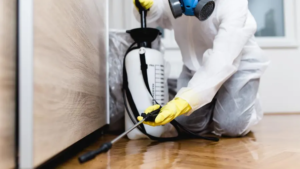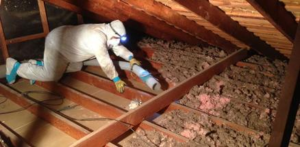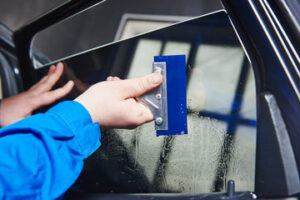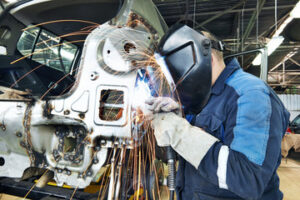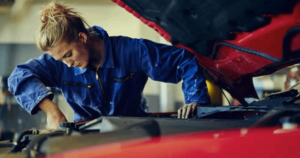Duluth Auto Injury Lawyer will be your advocate against at-fault insurance companies. Our tenacious attorneys can help you recover both economic and non-economic damages, including medical expenses, pain and suffering and loss of life enjoyment.
An auto injury lawyer can handle all communications with insurance companies, countering lowball offers and protecting victims against unfair denials. With extensive knowledge of law and insurance coverage nuances, they can ensure victims receive full and fair compensation.

When a car accident occurs, the consequences can be devastating. In addition to the emotional trauma, the victim could be left with significant medical expenses and a loss of income. While insurance companies may provide some relief, they often fall short when it comes to covering all of the victim’s losses.
A skilled personal injury attorney can help you recover both economic and non-economic damages from the at-fault party and other liable parties. The value of your claim will depend on the severity of your injuries, the extent of damage to your property, and whether you were able to work while you recovered from your injuries.
Medical expenses are a major component of any compensation award for a car accident. This can include bills for your hospital stay, surgery, therapy, medication, and other treatments. Lost wages due to time away from work can also be compensated, as well as future loss of income due to a permanent disability or impairment. In addition, the cost of modifying your home or vehicle to accommodate your new condition is also eligible for compensation.
The amount you receive for property damage will include the cost of repairing or replacing your damaged vehicle and other personal items. This can also include the cost of obtaining any necessary medical equipment, such as a wheelchair or a walker. Generally, the cost of these items will be reduced if the vehicle or other item was owned by a third party.
Non-economic damages are more difficult to quantify than the more tangible aspects of a car accident. However, a New York lawyer can help you determine the full extent of your harm and seek appropriate compensation. These include pain and suffering, disfigurement, and the loss of enjoyment of life.
Defending your rights to adequate compensation can be a complex process. The at-fault party’s insurance company will do everything they can to minimize their exposure and pay as little as possible. A skilled attorney can negotiate with the insurance company and, if necessary, file a lawsuit on your behalf to secure a fair settlement.
Insurance
A knowledgeable accident attorney will investigate the facts of your case, review medical records and obtain witness testimony to build a strong claim for damages. They will consider your current and future medical treatment, lost wages, and pain and suffering. They will also factor in the impact your injuries have on your quality of life and any emotional trauma you have suffered as a result of the crash.
Insurance companies often look for any reason to decrease the value of your claim or deny it altogether. An experienced lawyer will know how to counter these arguments and fight ruthlessly for the compensation you deserve.
As a no-fault state, New York requires drivers and passengers to carry a minimum amount of personal injury protection (PIP) coverage. PIP will cover your medical bills and lost income after a crash, up to the limit of your policy. If your injuries meet a threshold defined by the state, you may be able to sue the at-fault driver for additional compensation for things like pain and suffering and loss of enjoyment of life.
While proving fault in a car accident isn’t easy, there are common causes of collisions. Examples include someone running a red light or stop sign, a distracted driver, an unsafe turn, or icy roads. The lawyers at Zlotolow & Associates will review your case to determine if there is enough evidence to bring a successful claim against the driver responsible for your accident.
If your injuries fall within the limits of your PIP, your New York City car accident lawyer will help you file a claim with the at-fault driver’s insurer. However, it is important to see a doctor as soon as possible after your accident. Doing so creates a record of your injuries and makes it harder for insurance companies to deny your claims. In addition, it will help ensure your injuries are deemed serious, which may allow you to pursue additional damages not available through PIP such as excess wage loss and pain and suffering. This is one of the reasons why it’s so important to work with a car accident lawyer who knows how to maximize the value of your claim.
Statute of Limitations
In many states, including New York, car accident victims must file their lawsuits within a specific time period known as the statute of limitations. Missing this deadline will generally prevent a plaintiff from recovering any compensation, regardless of how severe the injuries and damages may have been or how clear the defendant’s liability is. In addition, adhering to the statute of limitations also helps maintain the integrity of physical evidence and witness memories, which are often key to building a strong case.
In New York, the statute of limitations for most personal injury-related cases is three years from the date of the crash. However, a variety of exceptions exist, including for minors and people who are mentally incapacitated. Additionally, New York is one of a few states that use comparative negligence in determining fault, meaning that plaintiffs can recover compensation even if they are found to be partially responsible for the accident.
For these reasons, it’s essential that anyone injured in a car accident consult with an experienced attorney as soon as possible. A skilled legal professional can explain the intricacies of the statute of limitations and help clients avoid missing important deadlines.
A lawyer could also assist with filing a claim with an insurer, helping ensure that all necessary paperwork is completed and filed properly. They can also handle negotiations with the insurance company and ensure that a victim receives maximum compensation for their losses.
It’s also worth noting that some states have caps on the amount of compensation that plaintiffs can receive from a personal injury lawsuit, including damages for pain and suffering. An experienced attorney can also advise on the complexities of these caps and work to maximize recovery in every case they handle.
Even when an accident occurs, it’s easy to forget about it over the course of several months or years. However, a lawyer can help ensure that all legal deadlines are met and that the claim is filed properly in court before the statute of limitations expires. They can also work with medical providers to evaluate injuries and document the impact of the accident on a client’s quality of life.
Settlement
The amount you receive in a settlement depends on several factors, including the severity of your injuries, your ability to return to work and future income, the cost to repair or replace your damaged vehicle, and non-economic damages, such as pain and suffering. Generally, the more severe the injury, the larger the settlement. Other factors that might affect the size of your settlement include the other party’s insurance policy limits and whether or not you were at fault for the accident.
Regardless of the cause of your car accident, it’s important to seek medical attention as soon as possible so that any serious injuries can be diagnosed and treated. The most common injuries are head trauma, spinal cord injuries, and broken bones. Severe injuries can be extremely difficult to recover from and have a significant impact on a person’s quality of life, so our clients are entitled to substantial compensation for their losses.
Our experienced lawyers have successfully negotiated or won large settlements for injured car accident victims. While these results cannot guarantee the outcome of your case, they can help you get an idea of what a fair settlement might be for your injuries.
In New York, we have a no-fault insurance system where drivers and passengers are compensated for basic economic losses up to $50,000 through the No-Fault benefits of their own auto policies. However, if you’ve sustained a serious injury in a crash, you can sue the at-fault driver or other liable parties for additional damages such as pain and suffering.
It’s essential to hire a lawyer who understands how to value your claim, especially for the non-economic damages like pain and suffering. A tenacious attorney can ensure you’re not offered an unfair low-ball offer from the insurance company.
The insurance companies know that you’re in a vulnerable position after a car accident, so they may try to take advantage of your emotions and stress to pressure you into accepting a settlement that is far less than what you deserve. Our attorneys will not settle until a sum is offered that fully covers your costs, injuries, and losses.
